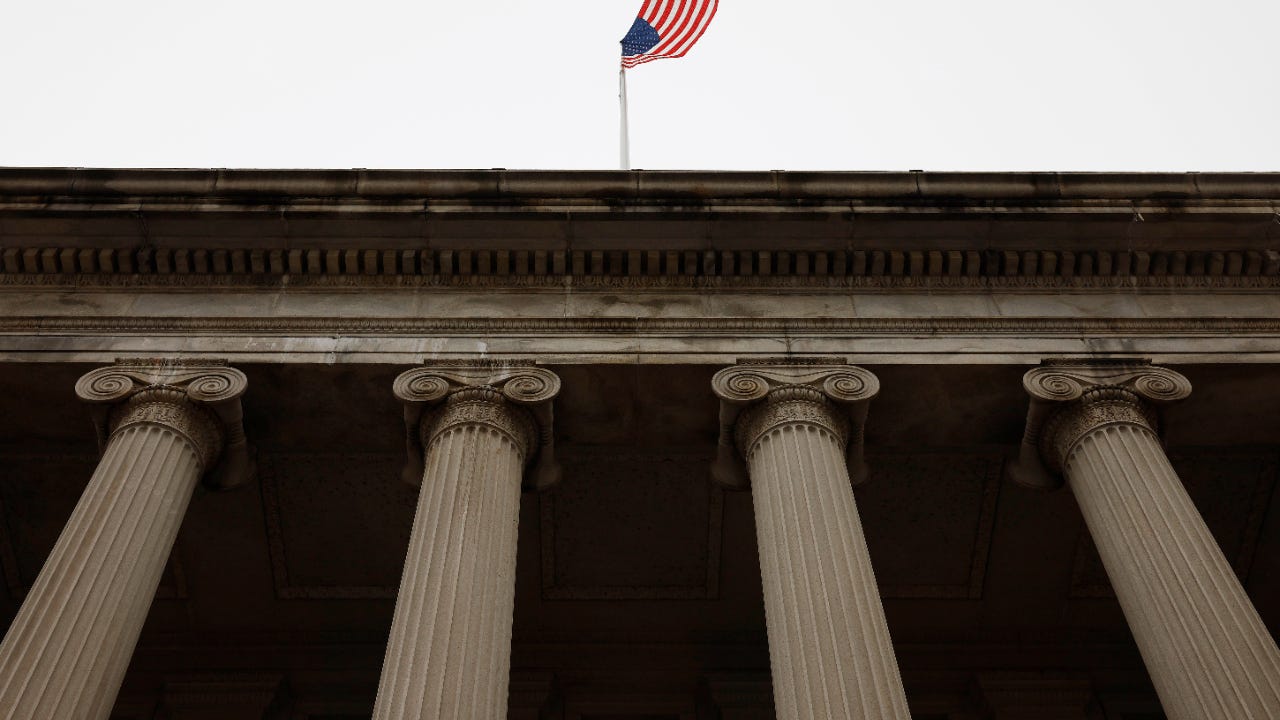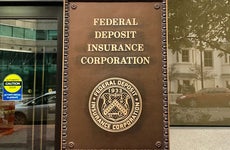What is a bank bailout?

The Bankrate promise
At Bankrate we strive to help you make smarter financial decisions. While we adhere to strict , this post may contain references to products from our partners. Here's an explanation for .
The 2023 failures of Silicon Valley Bank (SVB), Signature Bank and First Republic Bank marked some of the largest bank failures in U.S. history. In the days leading up to each of these regional banks’ demise, customers rushed to withdraw billions of dollars while stock shares plummeted.
In the cases of Silicon Valley Bank and Signature Bank, the federal government made the extraordinary decision to cover all of the deposits, including those that exceeded federal insurance limits. This drew criticism from those who likened it to the far-reaching government bailout during the 2008 financial crisis, which cost taxpayers $700 billion to save struggling banks and other firms.
One significant difference between the two situations, however, is that the recouping of deposits at SVB and Signature Bank was funded with zero taxpayer dollars — a point that’s been stressed by regulators, President Joe Biden and Treasury Secretary Janet Yellen.
Within two months of the failures of SVB and Signature Bank, the Federal Deposit Insurance Corp. (FDIC) took over the beleaguered San Francisco-based First Republic Bank on May 1, 2023, and sold most of its operations to JPMorgan Chase. The failed bank’s 84 offices in eight states reopened as Chase branches at the start of business the same day the bank was seized.
The FDIC gave JP Morgan Chase $50 billion in financing as part of the deal — which some say qualifies as a bailout — although the money won’t come from individual taxpayers. Rather, it draws on the FDIC’s Deposit Insurance Fund, which is funded in turn by insurance premiums from banks as well as from investments made with insurance revenue.
Weeks before First Republic failed, JPMorgan Chase, Citigroup, Bank of America, Wells Fargo and seven other big banks teamed up to infuse $30 billion into the troubled bank in an attempt to serve as a bailout. Ultimately, however, the failure of First Republic took place one week after it released a dire first-quarter earnings report.
Here we’ll look at what a bank bailout is while providing a few examples of notable bank bailouts from the past.
What is a bank bailout?
The term “bailout” is typically applied to a situation in which resources are provided — often in the form of cash or a loan — to a struggling entity to save it from collapse. The recipient can be a bank, a corporation or another type of organization.
The overall purpose of a government deciding to bail out a bank or other business can be to help protect the national economy, which may otherwise suffer dire consequences due to factors like job losses or lack of investor confidence.
The concept of a bailout often carries a negative connotation since it’s associated with banks or other companies needing government help as a result of reckless risk-taking. Hundreds of billions in taxpayer dollars were used to bail out banks and other corporations during the 2007-2008 financial crisis and the savings and loan crisis in the 1980s and 1990s.
Examples of bank bailouts
2007-2008 financial crisis
During the housing boom in the United States in the mid-2000s, many high-risk mortgage loans were made that targeted low-income, low-information homebuyers with poor credit histories. By 2007, a subprime mortgage crisis had developed in the country when mortgage companies started filing for bankruptcy and there was no market for the mortgages they owned.
Global financial firms Lehman Brothers and Bear Stearns went on to collapse, due in large part to their involvement in subprime lending. U.S. housing prices fell sharply, and millions of homeowners owed more on their mortgage loans than the amount their homes were worth.
This led to the Great Recession, a period of economic decline that lasted from December 2007 to June 2009. In 2008, the federal government created the Troubled Asset Relief Program (TARP), a $700 billion government bailout designed to keep troubled banks and other companies in operation.
Through the TARP, around $245 billion in taxpayer money was used to stabilize more than 700 banks. As part of the plan, the government bought preferred stock in troubled banks such as Bank of America, Citigroup, Goldman Sachs, J.P. Morgan, Morgan Stanley, Wells Fargo, Bank of New York Mellon and State Street Bank.
Most of the investments have since been resolved, and the government made a profit off of many of them.
Savings & loan crisis
Also known as thrifts, savings and loan associations (S&Ls) focus mainly on lending that finances residential properties — often in their local communities. In the 1980s and 1990s, many of the nation’s S&Ls failed as a result of their heavy investment in junk bonds as well as the negative impacts of double-digit inflation.
S&Ls were hurt in the 1980s by legislation that capped the interest rates they could impose on deposits and loans, leading depositors to seek out other banks for higher returns. A recession resulted in fewer people applying for mortgage loans, and many S&Ls were not able to stay afloat by relying on their relatively small numbers of low-interest mortgages.
As a result, Congress stepped in and passed the Financial Institutions Reform, Recovery and Enforcement Act of 1989. Under the law, the Resolution Trust Corporation was created to shutter hundreds of failed S&Ls and provide funds to make their depositors whole. This bailout ultimately cost taxpayers around $132 billion.
SVB and Signature Bank: Were they bailed out?
Various politicians, regulators and analysts have maintained the Treasury Department’s attempt to save depositors at Silicon Valley Bank and Signature Bank doesn’t constitute a bailout since it doesn’t take from taxpayers’ funds.
Instead, it draws from fees that banks pay into the Deposit Insurance Fund. What’s more, neither shareholders nor unsecured debt holders will be protected, which also means no taxpayer burden.
President Joe Biden, in televised remarks on March 13, stressed that he didn’t consider the government’s moves regarding the two failed banks to be a bailout. “No losses will be borne by the taxpayers,” he said. “Instead, the money will come from the fees that banks pay into the Deposit Insurance Fund.
Investors in the banks will not be protected, Biden said. “They knowingly took a risk and when the risk didn’t pay off, investors lose their money. That’s how capitalism works.”
Yellen echoed the remarks of the president in her March 16 testimony before a Senate Finance Committee hearing. Yellen stated the funds to cover deposits at the two collapsed banks come from fees paid by banks. “Importantly, no taxpayer money is being used or put at risk with this action.”
In their announcement on March 12 that depositors at both failed banks would have access to all their funds, the FDIC, the Federal Reserve and the Treasury Department stated “no losses will be borne by the taxpayer” and that shareholders and certain unsecured debtholders would not be protected.
Any losses to the Deposit Insurance Fund to support uninsured depositors at the failed banks would be covered through a “special assessment on banks,” the regulators’ statement read.
In this statement, regulators also said the Fed would make additional funding available to banks that are low on cash in the form of year-long loans through a newly formed Bank Term Funding Program.
Critics of the government’s actions in relation to the failed banks argue taxpayers may end up being affected if the Fed’s loans cause higher inflation.
An opponent of the government’s actions is Sen. Josh Hawley, a Republican from Missouri, who said on March 13 he was introducing legislation that would protect customers and community banks from the special assessment fees mentioned in the announcement by the Fed and other regulators.
“What’s basically happened with these ‘special assessments’ to cover SVB is the Biden administration has found a way to make taxpayers pay for a bailout without taking a vote on it,” Hawley said in a tweet.
Related Articles



Portfolio mortgage lenders: What are they and how do you find one?
